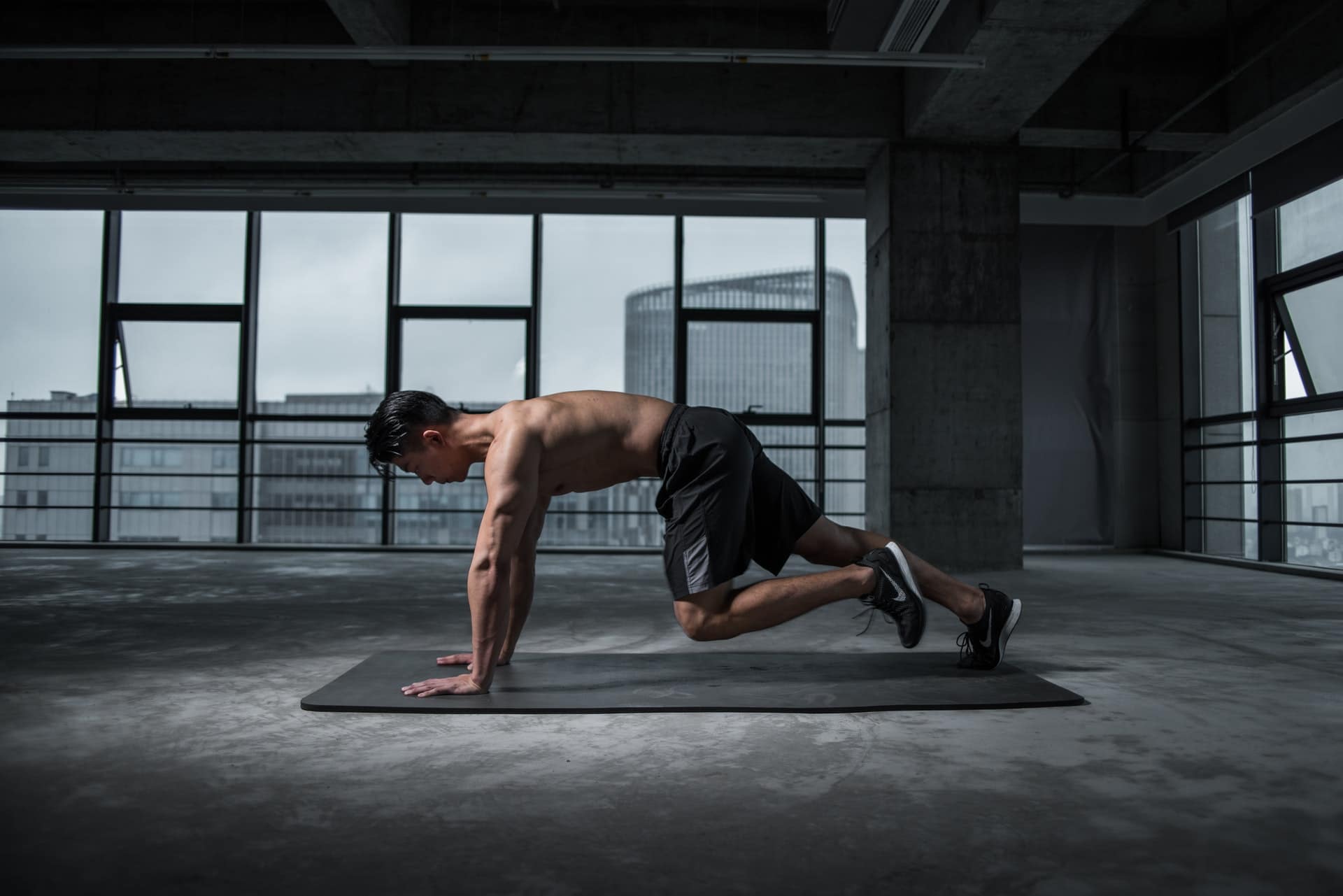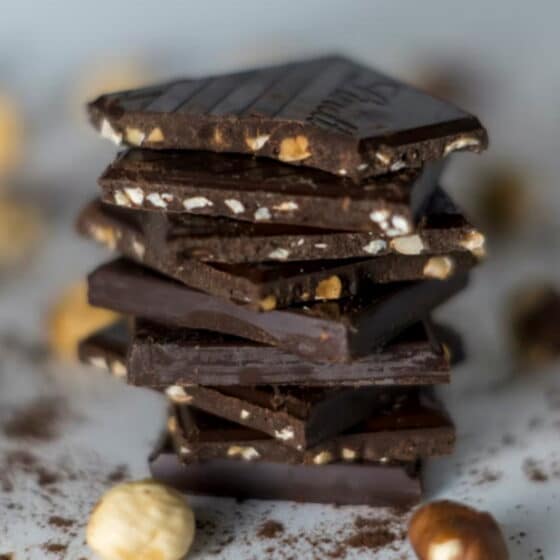Let’s not beat around the bush here guys – we might be stuck inside our homes for a while. The coronavirus is here to stay, and we don’t have much choice except to wait it out. But, that doesn’t mean we should just vegetate. This is a perfect opportunity to work on yourself and find room in your schedule for all those projects and life changes that you allegedly didn’t have time for before. And the best place to start is with a home workout.
Equipment
It goes without saying that this is not a routine for people with a complete home gym (since it’s like you’re still a member of a gym). On the contrary, it is designed for individuals who want a great at-home workout plan without equipment or a workout plan that includes basic things like a dumbbell and a pull-up bar.
Note that the more equipment you have, the sooner your results will show. Still, if you adhere to this system, you can have a great three-day-per-week workout.
The Ultimate Home Workout
This workout routine is there to help you build muscle and pack on some size, all from the comfort of your very own quarantine. It’s a simple meat-and-potatoes regimen, with minimal fluff. You have workout A, and workout B. One week you’ll be doing ABA, the other BAB, and so on.
Workout A
Bodypart Sets and Reps Rest Time
- Leg exercise (sq) 3×8 120s
- Chest Exercise 3×8 120s
- Back exercise (vert) 3×8 120s
- Biceps exercise 4×10 90s
- Ab exercise 3×12 60s
Workout B
Bodypart Sets and Reps Rest Time
- Leg exercise (ham) 3×8 120s
- Shoulder exercise 3×8 120s
- Back exercise (hor) 3×8 120s
- Tricep exercise 4×10 90s
- Ab exercise 3×12 60s
Notes
After you’re done with this full body workout at home, you should stretch, and get some cardio underway on days you don’t lift.
You can swap out the exercises (that’s part of the magic), but don’t mess with the order or the number of exercises. Only increase or decrease reps and sets if it’s getting too easy or too hard.
As you can see, the workout itself is a simple full-body routine, great for beginners and intermediates. However, total novices looking for at home workouts for beginners might also benefit from doing one less set per exercise. Advanced intermediates, on the other hand, who’ve been at it for years, might actually want to increase the volume by adding an extra set, or even by switching to a four-day upper/lower system or a typical bodybuilding split.
Exercise Selection
You’ve probably noticed that there are no actual exercises here, only muscle groups. That’s why this article is set up in this manner, to help you pick exercises you can do at home. You can choose exercises based on the equipment you have (and your general preferences) from the list below, and swap them out with the above-mentioned routine. The exercises are ordered, for each muscle group, by effectiveness.
Leg exercise – squat variations
First things first – squat variations are there because they hit your quads, your glutes, and they stabilize your core. Choose one of the following for some great leg workouts at home:
- Goblet squat
- Kettlebell squat (sumo or double)
- Pistol squat
- Bulgarian squats
- Free-weight squats (try to hit maximum reps)
Leg exercise – hamstring focus
You also need to hit that posterior chain and strengthen your hamstrings for stability and overall aesthetics. Do things like:
- Dumbbell deadlifts
- Kettlebell swings
- Stiff-legged dumbbell/Kettlebells deadlifts
- Glute ham raises (max reps)
Chest exercises
How can this be the best at home workout without chest work? Everybody loves chest day, and this article includes it. Try out some of the exercises below:
- Dumbbell floor press
- Dips (use sturdy chairs, tables, or a kitchen counter)
- One-arm press-ups
- Diamond push-ups, Wide Push-ups, Box Push-ups (increase the difficulty by getting your feet higher, on chairs or a bed)
Back exercise – vertical movement
If you want a wide, thick back, you need to get these as part of your routine. This at home workout plan requires a pull-up bar for these movements. If you don’t have one, swap it out with extra horizontal back work. If you do have one, do:
- Pull-ups
- Chin-ups
- Towel pull-ups
Shoulder exercises
These are difficult, but not impossible, to pull off at home. They will be hit much more directly with weights, but you can substitute them slightly. Try out:
- Dumbbell shoulder press
- High-incline push-ups
- Lateral or front raises
Back exercise – horizontal movement
Horizontal pulling back movements mostly boil down to rowing variations:
- Bent over dumbbell row
- One-arm dumbbell row
- Inverted rows (use a table)
Bicep exercises
You can get some solid arm workouts at home with this system. Prepare the gun show with:
- Curl variations (regular, concentration, hammer…)
- Towel pull-ups
- One-arm inverted rows
Tricep exercises
Too many people obsess over biceps, not knowing that tris give your arms a lot more thickness. Try some of the following to fill out your sleeves:
- Tricep kickbacks
- Dumbbell skull-crushers
- Kettlebell floor press
- Bench dips
Abs
You can use this pandemic to actually get the six-pack you’ve always dreamed of. Compiling ab workouts at home is easy if you use some of the bellow exercises:
- Weighted crunches
- Toe reach
- Russian twists
- Side to side crunch
- Plank
Cardio
As far as cardio is concerned, you can do it either after every workout, or on your off days. If you have a stationary bicycle, treadmill, or stepper, you’re pretty much all set. However, even if you have none of these, you can still order a jump rope, or you can even make one yourself. A good cardio workout at home is 30 minutes of intense cardio (or however much you can handle when jumping rope).
Notes
Keep several things in mind if you want to maximize your results:
- Try to make every workout harder by either increasing the weight you are using, doing a more complex variation of a movement, or simply doing extra reps. Progressive overload is key.
- Be creative, substitute a pull-up bar with a doorway, or weights with water bottles or paint cans.
- You can make your workout routine at home more difficult by adding actual weight on your body when doing dips and pull-ups.
Guide on the Best Home Workout Plan
This routine should give you a balanced workout, hitting every muscle group two times per week. Here you can find some info on how and why this routine is the way it is.
Resistance is resistance
The core of this article hinges on one notion – resistance is resistance. This means that your muscles do not know what is making them work extra hard. You might be building your lats with back exercises at home on a pull-up bar, or you might be using a lat machine. It might be the strain of your own body weight when you’re doing a push-up, or a certain amount of weight you’re pushing on the bench press.
With a strong understanding of how your body works (and a good plan), you can get almost the same results no matter if you’re doing your workouts at a calisthenics gym, outside, or at home. As long as you stick to a rep range that induces hypertrophy (i.e. muscle growth), you will get results. It doesn’t (technically) matter whether you’re doing home workouts with a water bottle or pumping iron in a fancy gym.
However…
Effectiveness of an exercise
The most effective exercises are here because of how much “bang for your buck” you get when you do them. This effectiveness is strongly correlated to equipment, which you may have noticed. Simply put, barbels, dumbbells, kettlebells actually make things less complicated. They also tend to hit a specific muscle group a bit better.
Doing a goblet squat is much easier than a Bulgarian lunge or a pistol squat, and a dumbbell floor press is simpler than continually thinking of more complicated push-up variations. When talking about good chest exercises at home, choosing one that is based on dumbbells is safer than gambling with the sturdiness of your chairs and tables.
Finally, an effective exercise is simple, and it facilitates progressive overload much more easily.
Progressive overload
It all boils down to progressive overload. Fitness training, bodybuilding, just getting stronger, in general, means adapting the body to new stressors. We tear muscle fibers on a molecular level when we work out, and as the muscle heals, it adapts, and it becomes stronger.
Any good regime, home exercise program or otherwise, needs to become harder with every subsequent workout. Progressive overload means we constantly place new resistance, greater strain, upon our bodies, toughening them up (after they heal). It doesn’t matter if our shoulders are hit with incline push-ups or dumbbell presses. Overdo it, and you can get hurt, or you simply won’t recover. Do too little, and you won’t see any results.
A Bit on Calories Before You Go
You might have noticed that there was no mention of weight loss or fat loss in this article on workouts to do at home… Simply put, you need to be in a caloric deficit to lose weight, and you need to eat an excess of calories if you want to gain weight. This workout will help you build muscle if you get enough protein and calories, and it will help you lose fat if you eat under your caloric maintenance level. So, this can serve as the best home workout program under the circumstances, especially if you add some extra cardio.
Now, figuring out your caloric maintenance level can be a challenge. We suggest you get a home workout app or some calorie tracking app, and get to work. Keep an eye on what you eat, and don’t give in to the temptation of treating this pandemic as a vacation.
FAQ
Can I build muscle without weights?
Yes, you can. Keep in mind that resistance is resistance. As long as you put your muscles under enough strain, be that the strain of pushing your body up and down or doing the same to a barbell, you will see results. Strength training without weights is totally possible, but you have to make things more difficult, and you might have to be a bit more creative too.
Is it effective to work out at home?
Its effectiveness is highly dependent on the equipment you have at home, as well as your goals and your creativity. More gear means more options, as well as a greater exercise selection. This issue can be circumvented if you are familiar with your body and if you are creative (like if you were to MacGyver a dip set-up from some chairs).
What exercise burns the most belly fat?
The exercise that burns the largest number of calories. Namely, targeted fat loss, i.e. spot reduction, is a myth, and claiming that one specific exercise will help you lose fat on specific parts of your body is disingenuous, at best. As we’ve mentioned above, you need to burn more calories than you ingest, as well as exercise regularly and clean up your diet.
How can a beginner start working out at home?
Just start. While the above is an excellent and all-around balanced routine, know that getting your body moving is what matters the most. While a properly programmed and set-up routine will give you the best results, push-ups, sit-ups, and crunches every other day will give you (poorer) results as well. The best way to begin with an at home work out? Drop to the floor, and give us twenty (or however much you can).
Conclusion
Corona means a lot of things. If you’re lucky, you just have to deal with boredom. You can’t go to the bar with your friends, you can’t really hang out – you’re stuck. The gym is also a no-go, as is the park. Working out at home means killing time in a productive, useful way. Home workouts are perfect for getting rid of stress and helping you focus if the pandemic hit your life harder than most. They might even help you with school.
Our solid home workout guide should tide you over until the gyms open up (or until you get some extra gear). Note, however, that the most important part of any workout routine is consistency and effort. Exercising regularly, cleaning up your diet, and giving what at the moment is your 100% matters the most.











